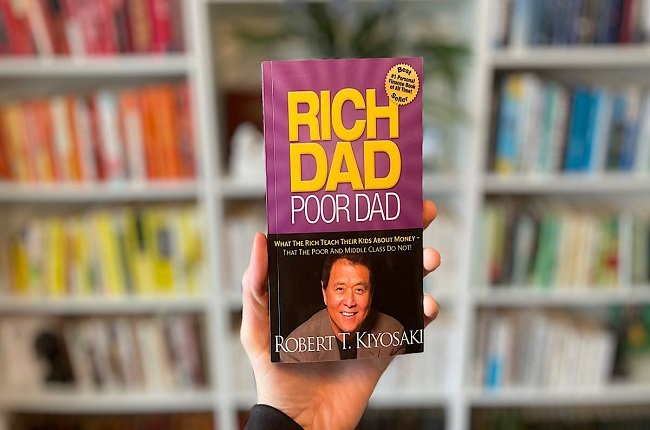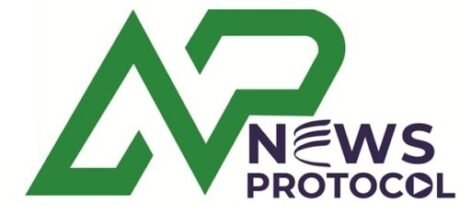
When I first picked up Rich Dad Poor Dad, I didn’t know how profoundly it would impact my views on money and wealth-building. Written by Robert Kiyosaki, the book contrasts the financial philosophies of two key figures in his life: his biological father, whom he refers to as “poor dad,” and his best friend’s father, the “rich dad.” Each of these men represents different attitudes toward money, work, and investing. Through their stories, Kiyosaki shares five powerful lessons that can help you transform your financial future. In this article, I will explore these lessons and provide actionable tips to implement them in your life.
Lesson 1: The Importance of Financial Education
The first and perhaps most critical lesson from Rich Dad Poor Dad is the importance of financial education. Many people mistakenly believe that having a good job and earning a stable income guarantees financial security. However, Kiyosaki emphasizes that without a solid understanding of financial principles, you may still struggle to manage your money effectively.
Key Points to Consider:
- Understand How Money Works: Financial education is about knowing how to make money work for you. This includes learning about investments, market trends, and various financial products.
- Invest in Your Knowledge: Whether through books, courses, or seminars, investing in your financial education is one of the best decisions you can make. Kiyosaki believes that this knowledge will empower you to make better financial choices.
- Seek Knowledge Beyond Traditional Education: Traditional schooling often does not cover essential financial skills. Look for resources that specifically address money management and investing.
Actionable Tips:
- Read Books: In addition to Rich Dad Poor Dad, consider reading other personal finance books such as The Intelligent Investor by Benjamin Graham or The Total Money Makeover by Dave Ramsey.
- Take Online Courses: Websites like Coursera and Udemy offer financial literacy courses that can help you understand the basics of investing and budgeting.
- Attend Workshops: Many community centers or local financial institutions host free workshops that can provide valuable insights.
By prioritizing financial education, you can build a strong foundation for managing your money effectively.
Lesson 2: Assets vs. Liabilities
One of the most crucial distinctions Kiyosaki makes in Rich Dad Poor Dad is between assets and liabilities. Understanding this difference is key to building wealth.
What Are Assets?
- Income-Generating: Assets are anything that puts money into your pocket. Examples include rental properties, stocks, bonds, and businesses.
What Are Liabilities?
- Money Drainers: Liabilities take money out of your pocket. Common examples include your primary residence, car payments, and credit card debt.
Kiyosaki’s message is clear: to become financially successful, you need to focus on acquiring assets and minimizing liabilities.
Quick Tips for Building Assets:
- Invest in Real Estate: Consider purchasing rental properties or investing in Real Estate Investment Trusts (REITs) for a steady income stream.
- Invest in Stocks and Bonds: Look into stocks that pay dividends or government bonds for more secure investments.
- Start a Business: Creating your own business can be a highly effective way to build assets.
By shifting your focus to acquiring income-generating assets, you can gradually improve your financial situation.
Lesson 3: The Mindset Shift
Another powerful lesson from Rich Dad Poor Dad is the necessity of changing your mindset regarding money. Kiyosaki emphasizes that wealthy individuals think differently from those who are less financially successful.
Abundance vs. Scarcity
- Focus on Opportunities: Instead of viewing money as a limited resource, adopt an abundance mindset. This approach encourages you to look for opportunities to invest and grow your wealth.
- Embrace Failure: Understand that failure is a natural part of learning. Many successful entrepreneurs have experienced setbacks before achieving success.
Positive Thinking
- Visualize Success: Picture yourself achieving your financial goals. Visualization can motivate you to take the steps necessary to reach those goals.
- Surround Yourself with Positive Influences: Engage with people who have similar financial aspirations. This positive environment can encourage you to stay committed to your goals.
Practical Mindset Shifts:
- Practice Gratitude: Regularly reflect on what you have achieved, which can help shift your focus from scarcity to abundance.
- Affirmations: Use positive affirmations related to money and success to reinforce your new mindset.
- Continuous Learning: Embrace the idea that learning never stops, and every experience is an opportunity for growth.
Changing your mindset about money can lead to significant improvements in your financial journey.
Lesson 4: Work to Learn, Not Just to Earn
Kiyosaki believes that one of the biggest mistakes people make is working solely for money. Instead, he encourages us to “work to learn.” Here’s how to apply this lesson effectively:
Gain Valuable Skills
- Seek Diverse Experiences: Look for job opportunities that offer valuable skills, even if the pay isn’t high initially. Positions in sales, marketing, or finance can provide insight into how businesses operate.
- Learn About Different Industries: Understanding various fields can broaden your perspective and open up new income opportunities.
Networking
- Build Relationships: Use your job as a platform to meet new people. Networking can lead to valuable connections and opportunities that can significantly enhance your career.
- Find a Mentor: Having a mentor can provide guidance and support as you navigate your financial journey. A mentor can share their experiences and insights, helping you avoid common pitfalls.
Steps to Apply This Lesson:
- Volunteer for New Projects: Taking on different responsibilities can provide valuable experience and show your commitment to growth.
- Attend Industry Events: Networking events, conferences, and workshops can help you meet like-minded individuals and industry leaders.
- Set Learning Goals: Each month, set a goal to learn something new related to your career or finances.
By focusing on learning rather than just earning, you can develop skills and connections that increase your market value.
Lesson 5: The Power of Entrepreneurship
The final lesson I absorbed from Rich Dad Poor Dad is the significance of entrepreneurship. Kiyosaki argues that starting your own business can be one of the most effective paths to financial independence.
Steps to Start Your Own Business
- Identify Your Passion: Find something you are passionate about. This passion will keep you motivated through the challenges of entrepreneurship.
- Research Your Market: Understand who your target audience is and what they need. This knowledge will guide your business decisions and strategies.
- Create a Business Plan: Outline your goals, strategies, and financial projections. A solid business plan can help you stay organized and focused.
- Take Action: Don’t wait for the perfect moment to start. Taking action, even if it’s small, is crucial in the entrepreneurial journey.
Benefits of Entrepreneurship
- Financial Independence: Owning a business allows you to create multiple streams of income, which can lead to financial freedom.
- Flexibility: You can set your own hours and make decisions that align with your goals and values.
- Legacy Building: A successful business can provide financial security for future generations and create a lasting impact.
Tips for Aspiring Entrepreneurs:
- Start Small: You don’t need a massive investment to start. Begin with a small idea that you can grow over time.
- Utilize Technology: Leverage online platforms and tools to promote and manage your business.
- Stay Resilient: The road to entrepreneurship can be tough, but resilience is key. Learn from failures and keep pushing forward.
Embracing entrepreneurship can lead to a fulfilling and financially rewarding career.
Putting It All Together
After absorbing the lessons from Rich Dad Poor Dad, I have taken actionable steps to transform my finances. Here’s a quick recap of what I’ve learned:
- Invest in Financial Education: Knowledge is power when it comes to finances.
- Focus on Assets, Not Liabilities: Build a portfolio that generates income.
- Shift Your Mindset: Embrace an abundance mentality and stay positive.
- Work to Learn: Gain skills and experiences that will benefit your future.
- Consider Entrepreneurship: Explore business opportunities that align with your passions.
By applying these lessons, I have not only improved my financial knowledge but also taken concrete steps toward financial independence.
Rich Dad Poor Dad lessons for beginners
Rich Dad Poor Dad offers valuable lessons for beginners who want to build financial literacy. The book highlights how different mindsets, like the “rich” versus the “poor,” impact financial decision-making. By starting with the foundational principles in Rich Dad Poor Dad, beginners can understand the difference between assets and liabilities, why it’s essential to generate passive income, and how to develop an entrepreneurial mindset. These lessons from Rich Dad Poor Dad are crucial for anyone new to personal finance and looking to take control of their future. For more on these ideas, check out this insightful article on appreciating nature.
Rich Dad Poor Dad financial advice for millennials
Millennials can benefit greatly from the financial advice offered in Rich Dad Poor Dad. The book provides practical strategies that can help this generation manage debt, invest wisely, and create wealth. Rich Dad Poor Dad emphasizes the importance of acquiring financial education and escaping the traditional “work-for-money” mindset. The financial advice in Rich Dad Poor Dad is tailored to teach millennials how to build assets and generate passive income. With student loans and rising living costs, millennials must embrace these concepts early to achieve financial freedom.
Rich Dad Poor Dad book summary for financial success
A summary of Rich Dad Poor Dad highlights its core message: achieving financial success requires a different approach than what most people are taught. The book advocates for building assets, investing wisely, and thinking like the rich. By breaking down key concepts like cash flow and the importance of financial education, Rich Dad Poor Dad offers readers a roadmap to wealth. The summary of Rich Dad Poor Dad focuses on actionable lessons that readers can apply immediately to improve their financial standing.
How to apply Rich Dad Poor Dad in real life
Applying Rich Dad Poor Dad in real life is essential for those looking to escape the paycheck-to-paycheck cycle. The book’s principles, such as focusing on assets over liabilities and investing in financial education, are designed to help people grow their wealth. In real life, you can implement Rich Dad Poor Dad lessons by starting small investments, managing your finances wisely, and prioritizing financial literacy. The book also teaches how to take calculated risks, a key component in reaching financial independence. Applying Rich Dad Poor Dad ideas can help anyone achieve long-term success.
Rich Dad Poor Dad investing tips for beginners
For beginners, Rich Dad Poor Dad offers several investing tips that are easy to understand and implement. The book advises focusing on building assets like real estate and stocks while minimizing liabilities. The key takeaway from Rich Dad Poor Dad is to always make your money work for you through smart investing. By following the investment principles in Rich Dad Poor Dad, beginners can learn how to create multiple streams of income, reduce debt, and ensure long-term financial growth. Start applying these strategies today and build a future of financial independence.
FAQs
What is the main message of Rich Dad Poor Dad?
The main message is the importance of financial education, understanding the difference between assets and liabilities, and thinking like the wealthy.
How can I start applying these lessons today?
Begin by educating yourself about personal finance, evaluating your assets and liabilities, and considering entrepreneurial opportunities.
Is Rich Dad Poor Dad suitable for beginners?
Yes, it’s written in an accessible style and is great for anyone looking to improve their financial literacy.
Are the principles in the book applicable to today’s economy?
Absolutely. The lessons about financial education and entrepreneurship remain relevant regardless of economic conditions.
Where can I find Rich Dad Poor Dad?
You can find the book in bookstores, online retailers, or local libraries.
In conclusion, Rich Dad Poor Dad offers invaluable insights into transforming your finances. By applying these lessons in your life, you can work towards achieving financial independence and a better understanding of how money works. If you’re looking for a roadmap to financial success, this book is a fantastic starting point.
And don’t forget to check out the iPhone 16 Pro Max here to stay updated with the latest technology as you embark on your financial journey!
You May Also Like:
20 Gram Bilezik Ne Kadar: 5 Shocking Trends Affecting Prices Today







